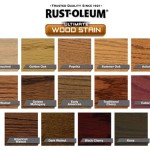How Long Does It Take To Paint The Interior Of A House?
Determining the timeframe for painting the interior of a house is not a straightforward calculation. Numerous factors contribute to the overall duration of the project. These elements range from the size and layout of the house to the condition of the existing walls and the desired quality of the finish. Accurately estimating the time required is crucial for both homeowners and painting professionals to ensure realistic expectations and efficient project management.
This article will delve into the various factors that influence the duration of an interior painting project, providing a comprehensive overview of the elements that contribute to the overall timeline. Understanding these considerations allows for a more informed approach to planning and executing a successful interior painting endeavor.
House Size and Layout
The most obvious factor affecting the painting timeline is the overall size of the house. A larger house with more square footage naturally requires more time to paint than a smaller dwelling. This is directly proportional to the amount of surface area that needs to be prepped, primed, and painted.
Beyond square footage, the layout of the house also plays a significant role. An open-concept floor plan might seem more straightforward, but the uninterrupted wall space can actually increase the painting time. Conversely, a house with many smaller rooms, hallways, and intricate architectural details will require more time due to the increased cutting-in work and maneuvering around obstacles. Factors like high ceilings also contribute to the complexity and duration of the project, often necessitating the use of ladders or scaffolding.
The number of rooms is another crucial consideration. Each room often requires its own dedicated setup, preparation, and cleanup, adding to the overall time. Painting multiple rooms with different colors further complicates the process, as it necessitates additional steps for color changes and clean-up.
Finally, the presence of built-in features, such as bookshelves, cabinets, and fireplaces, can significantly increase the painting time. These features require careful preparation, masking, and painting, adding to the complexity and overall duration of the project. Consider the impact of window and door trim, baseboards, and crown molding as these can dramatically increase the total time required. Ornate trim requires significantly more effort to paint well.
Surface Condition and Preparation
The condition of the walls and ceilings is a major determinant of the time required for an interior painting project. Walls that are in pristine condition require minimal preparation, while those with cracks, holes, or peeling paint necessitate extensive repairs before painting can commence.
Filling holes and cracks with spackle or joint compound is a time-consuming process, especially if multiple coats are needed to achieve a smooth, even surface. Sanding the repaired areas is also critical to ensure a seamless finish. Removing old wallpaper is particularly labor-intensive and can significantly extend the painting timeline. The method for wallpaper removal often depends on the type of wallpaper and the adhesive used, and can vary from simply peeling it off to using specialized steamers and solvents. Scraping, cleaning, and patching the wall after wallpaper removal is necessary before any priming or painting can begin.
Cleaning the walls is another crucial step in the preparation process. Removing dust, dirt, grease, and other contaminants ensures proper adhesion of the paint. This can involve washing the walls with a mild detergent solution and allowing them to dry completely before proceeding.
Priming is often necessary, particularly when painting over bare drywall, stained surfaces, or when making significant color changes. Primer seals the surface, promotes adhesion, and helps to ensure uniform color coverage. The drying time for primer also needs to be factored into the overall timeline. Using high-quality primer can make a significant difference in the final finish and durability of the paint job.
The presence of mildew or mold can add a considerable amount of time to the project. Proper remediation is essential before painting to prevent the problem from recurring. This usually involves scrubbing the affected areas with a bleach solution and allowing them to dry thoroughly.
In summary, the time needed for surface preparation can vary widely depending on the condition of the walls and ceilings. Thorough preparation is essential for achieving a high-quality, long-lasting paint job, although it increases the overall timeline. Skipping or skimping on preparation can lead to adhesion problems, uneven color coverage, and ultimately, a less satisfactory result.
Paint Type and Application
The type of paint used also impacts the painting timeline. Different types of paint have different drying times, coverage rates, and application requirements. Latex paint, for example, typically dries faster than oil-based paint, allowing for quicker recoating. However, oil-based paint may offer better durability and a smoother finish in some cases.
The number of coats of paint required is another crucial factor. In most cases, two coats of paint are necessary to achieve full coverage and a uniform finish. However, when painting over a dark color with a light color, or when using a low-quality paint, more coats may be required. Each additional coat of paint adds to the overall time required.
The application method also plays a role. Using a roller is generally faster for painting large, flat surfaces, while a brush is necessary for cutting in around trim, corners, and other details. Spraying paint can be even faster for certain areas, but it requires more extensive masking and preparation to protect surrounding surfaces.
The skill and experience of the painter also affect the application speed and quality. A professional painter with years of experience can typically paint faster and more efficiently than a novice. Their expertise in application techniques, brush and roller control, and masking procedures can save time and ensure a better finish.
Environmental conditions, such as temperature and humidity, can also affect the drying time of paint. High humidity can slow down the drying process, while extreme temperatures can affect the paint's consistency and application characteristics. Working in a well-ventilated area is essential for proper drying and to minimize exposure to paint fumes.
Furthermore, specialized paints, such as those with textures or special finishes, can require more time and skill to apply. These paints may require specific application techniques and tools to achieve the desired effect.
The equipment used also contributes to the efficiency of the painting process. High-quality brushes and rollers can hold more paint and provide better coverage, reducing the number of trips to the paint can and improving overall application speed. Extension poles for rollers and brushes can also speed up the process when painting high walls and ceilings.
In conclusion, the type of paint, application method, skill of the painter, and environmental conditions all play a significant role in determining the painting timeline. Choosing the right paint and application techniques, along with hiring a skilled painter, can help to optimize the process and ensure a timely and high-quality result.
Considering all of these factors, providing a definitive answer to the question of how long it takes to paint the interior of a house is difficult. However, a careful assessment of the house size, layout, surface condition, paint type, and application methods can help to generate a realistic timeline for the project.

How Long Would It Take To Paint My Home S Interior

How Long Does It Take To Paint The Interior Of A House

How Long Does It Take To Paint A House Interior Corps

How Long Does An Interior House Painting Project Take

How Long To Paint A House Interior Localpainter Florida

How Long Does It Take A Professional Painter To Paint Room

How Long Does It Take To Paint The Interior Of A House

Facts On How Long To Paint A House Interior Pristine Painters

How Long Does It Take To Paint A House Interior Corps

How Long Does It Take To Paint A House Interior Corps
Related Posts








